New life asserted,
The trees shake off their slumber.
Winter Surrenders.
A haiku: simple, to the point, and able to elegantly encapsulate big ideas in a very small package. It is truly one of Japan’s greatest exports, but it is hardly the most impressive of Japan’s artistic endeavors. When you think of Japan and you think of art, undoubtedly, you think of ukiyo-e, the Japanese art form that emerged in the 1600s and enjoyed fame well into the late 1800s before its popularity began to decline. Here’s a classic example of the form:
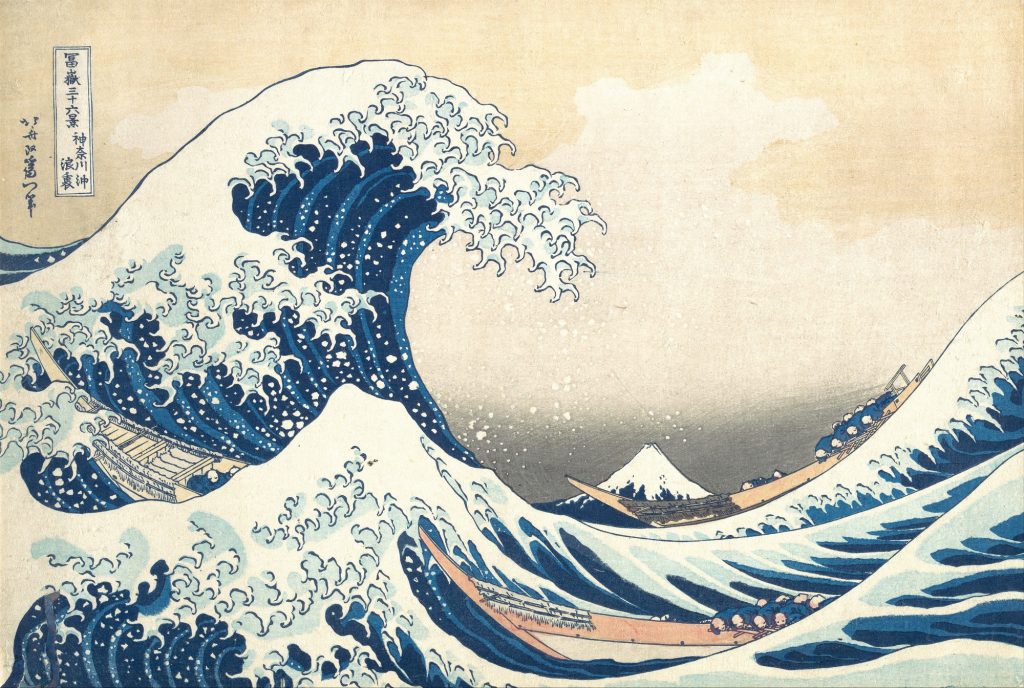
If you are an astute observer, you no doubt noticed that the name of the location in that woodcut shares its name with the game that you came here to read about, and this isn’t incidental. During his stellar career, Hokusai not only grew to become one of Japan’s most renowned painters of all time, but he also began teaching students of his own. In the game of Kanagawa, you are one of these students and your goal is to become the best student that you can in order to impress the master.
Kanagawa is played using multi-purpose cards, each of which, when drafted, can either be used to improve a player’s studio thereby giving the players access to different landscape types, additional victory points, and various ways to manipulate the game’s other physical components or to add to their masterpiece (which is where the glut of the game’s victory points are earned). When the game comes to an end, whoever has created the greatest work of art will win the esteem of the great Hokusai.
If you’re just wondering what I think about the game, feel free to skip to the Thoughts section. Otherwise…
Welcome to Art School
In between the prospective students lies a roll-up mat called the School Board. Initially this mat will be empty but as the game continues, a certain number of Lesson cards drawn from a pre-shuffled deck will be placed onto this mat. Some cards are placed face up and others are placed face down. The total number of cards placed is dictated by the player count, while the face up or down orientation is dictated by where the cards are placed onto the School board.
Above the school board you will place the Diploma tiles. These come in several different colored types and should be arranged side-by-side in ascending numerical order within each color type. These diplomas represent different bonus point conditions that the players can strive to achieve during the game (i.e. – having multiples of the same people or different groupings of animals represented in their masterpieces or having access to different types of landscapes).
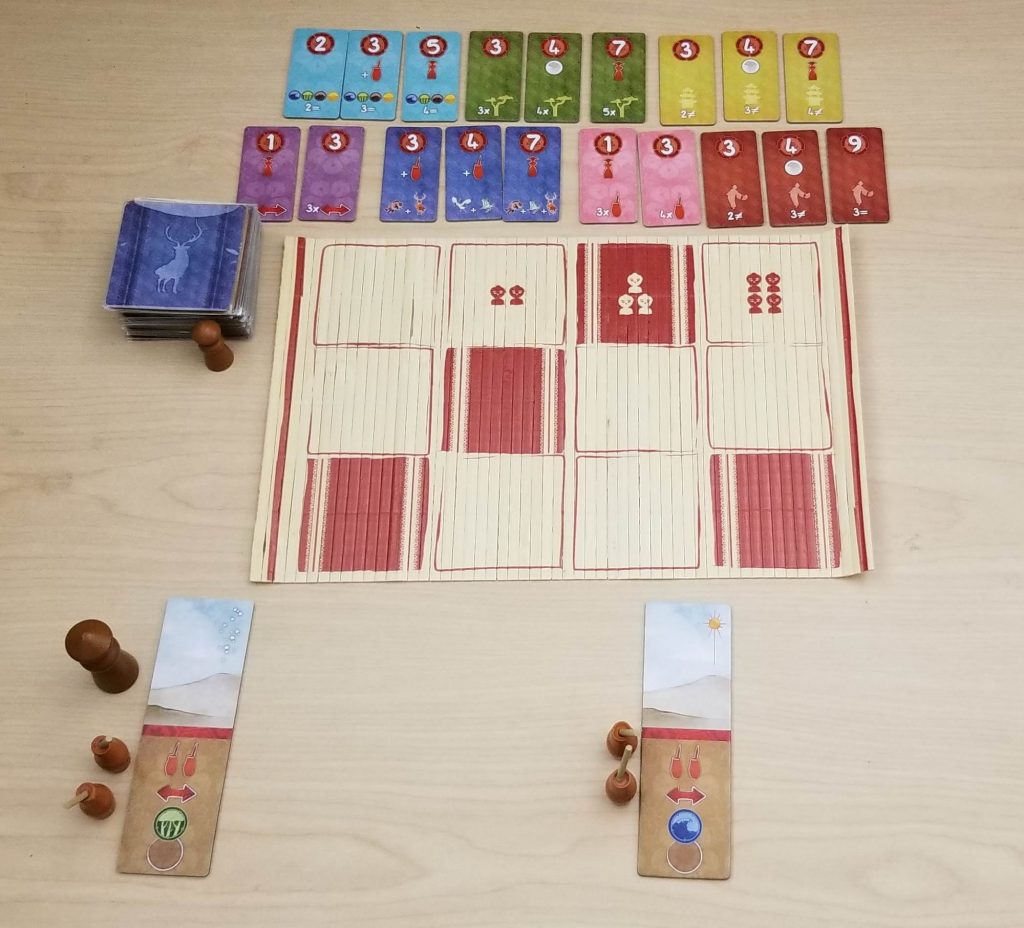
Each student is also given a starting tile which depicts the beginning of their masterpiece as well as the first landscape type that they have access to. These starting tiles also dictate that each player begins the game with 2 Brush pawns as well as the ability to move a single Brush pawn either one card to the left or one card to the right during each round of play; an ability referred to in the game’s terminology as “know-how”.
Once the students are adequately prepared, one of them is given the Grand Master and Assistant pawns and they will become the start player.
Becoming Knowledgeable
Each round begins with a lesson from the Grand Master. The start player draws cards equal to the player count from the top of the card deck and places them into the first row of the School board. Then, beginning with the start player, each student can either take all of the cards from a column and add them to their playing area or they can choose to pass.

Once everyone has taken cards or passed and at least one person has not taken cards, the Grand Master will draw cards for the second row. The same process is repeated and cards are then drawn for the third row if it comes to that. The longer you stay in school, the more cards you will have access to, but if you tarry for too long, your opponents might grab the cards you were hoping to get before it becomes your turn again. If a player begins their turn and they are the last student, then they must immediately take all of the cards from a column and use them.
Using What You’ve Learned
Once you’ve taken your cards you must use them in any order of your choosing, and you have the choice of adding them to your masterpiece or improving your studio.
Adding to Your Masterpiece
Each Lesson card has two distinct parts: turned one way the landscape is upside right, turned the other way the studio portion is upside right. At the bottom middle of each landscape section are one or more icons which dictate the landscape type that the student must have access to in order to add this card to their masterpiece. If they have one of their Brush pawns in their studio on top of an icon of the appropriate type, then they will take the card and slide it in beneath the other cards which already exist within their masterpiece thereby extending it. This icon is essentially used up for the rest of the turn and may not be used to add a second card of the same type. For instance, if there are two cards with the yellow icon on them, but the student only has access to a single yellow icon in their studio, then only one of these cards can be added to their studio.
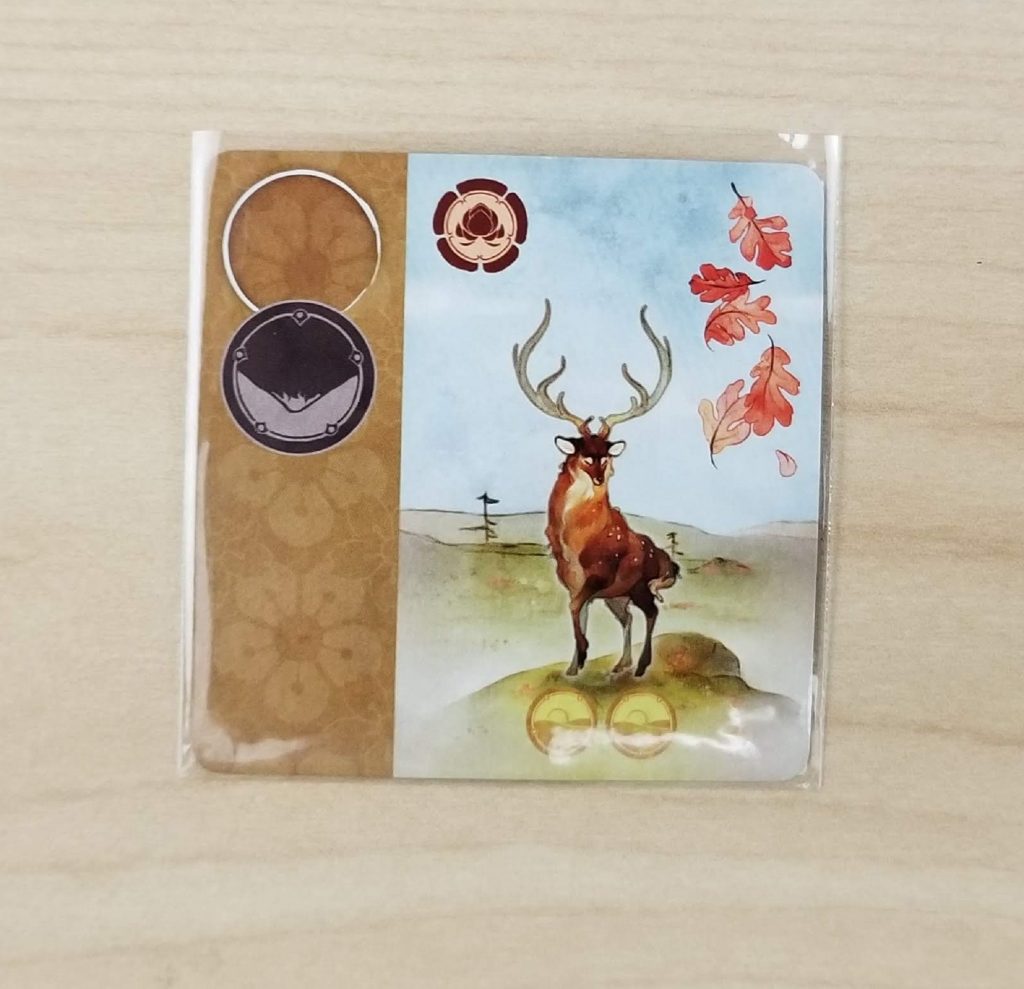
There are a few things to consider when adding to your masterpiece. Firstly, the diploma tiles require certain types of objects to be present within your masterpiece in order for you to claim that diploma (which we’ll get to shortly). That might affect your decision about what to add to your masterpiece. Secondly, each Lesson card also contains a season icon. The more consecutive season icons of the same type appearing in your masterpiece at the end of the game, the more victory points you will score (which will be illustrated later).
Improving Your Studio
Flipping the Lesson cards upside down will allow you to slide the card beneath the existing studio cards in your display. These cards provide additional functionality in the way of new types of landscapes, victory points, additional Brush pawns, the ability to move Brush pawns around, as well as the ability to claim the starting player position. If you have a Brush pawn that has not been added to a card yet, then you may add that Brush pawn to any card of your choice at any point during your turn. Otherwise, the only way to gain access to different landscape types is to use your “know-how” to shift your Brush pawns around.
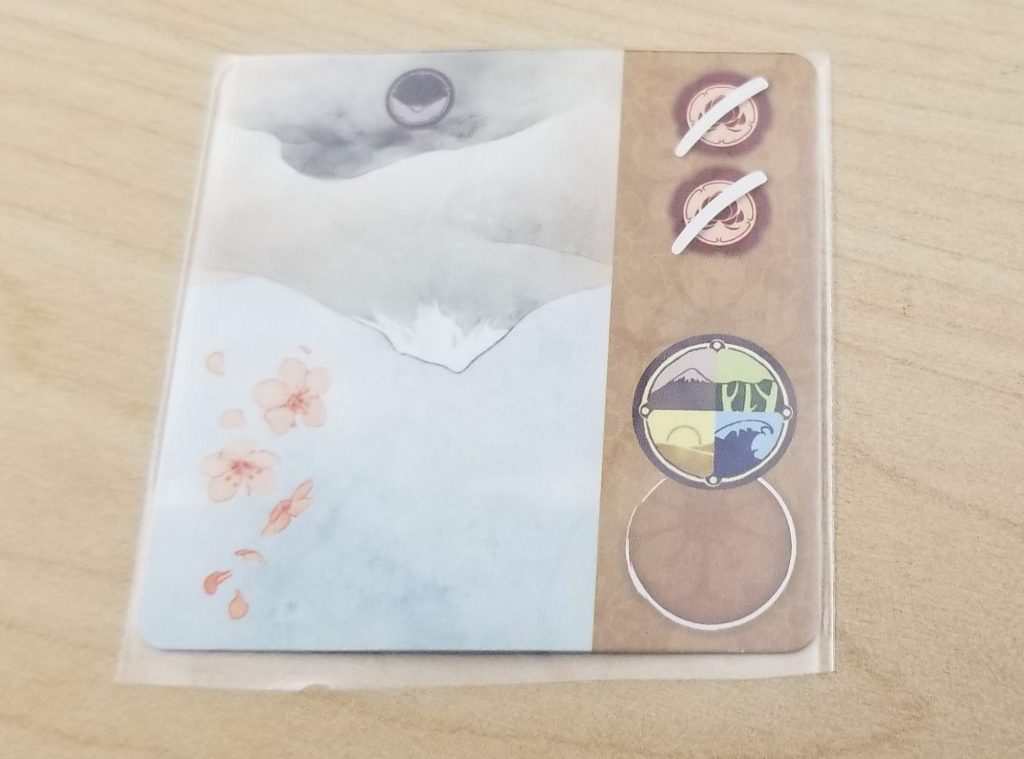
Graduation
The game comes to an end after the deck of cards has run out and all players have collected cards for the round and then used them, or at the end of a round when one player has at least 11 cards in their masterpiece. At this point any players that have collected Storm tokens (obtained from completing certain diplomas) may place these onto cards in their masterpiece. These tokens allow the player to change the season icon on a card into the season icon of their choice. Then scoring is done.
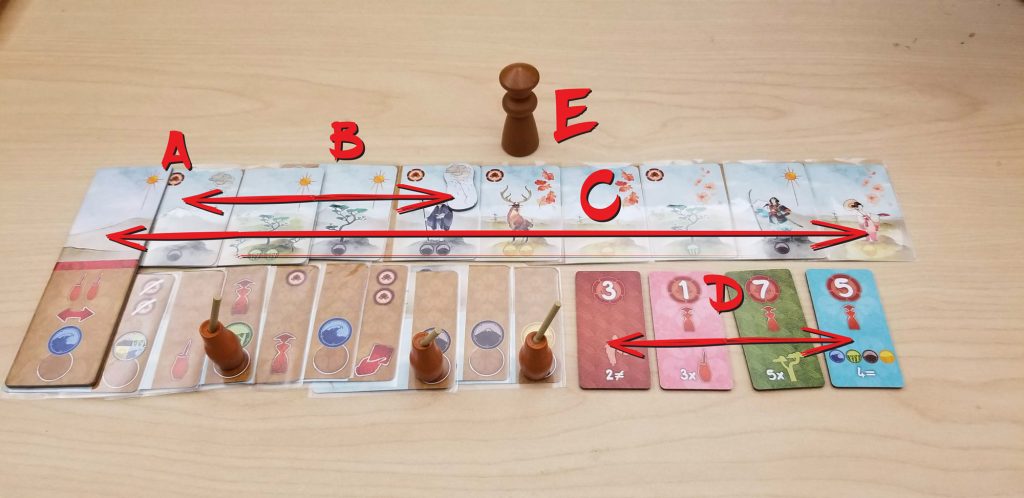
Each card in a student’s masterpiece is worth a single point apiece. The student then earns one point per card in the longest string of a single season icon type in their masterpiece. Some cards may earn (or cost) the students victory points and they also earn additional points from the diplomas that they have collected. Finally, the person holding the Grandmaster pawn at the end of the game is awarded an extra 2 points and then whoever has the most points is declared the winner.
Thoughts
The first thing you will undoubtedly notice about Kanagawa when gazing upon it for the very first time is its aesthetic. Jade Mosch’s brilliant artwork manages to capture the feel of a classic ukiyo-e masterpiece, but with her own modern spin. Her colors are bright and vibrant and her brushwork is impeccable. Each card is illustrated in such a way that the background flows as one continuous element across the entire array of cards. On top of the amazing illustrations, you will be blown away by the stellar component quality. From the foldable mat (redolent of the mats used in sushi preparation) to the adorable Brush pawns, these components leave very little to be desired. Kanagawa is a beautiful game.
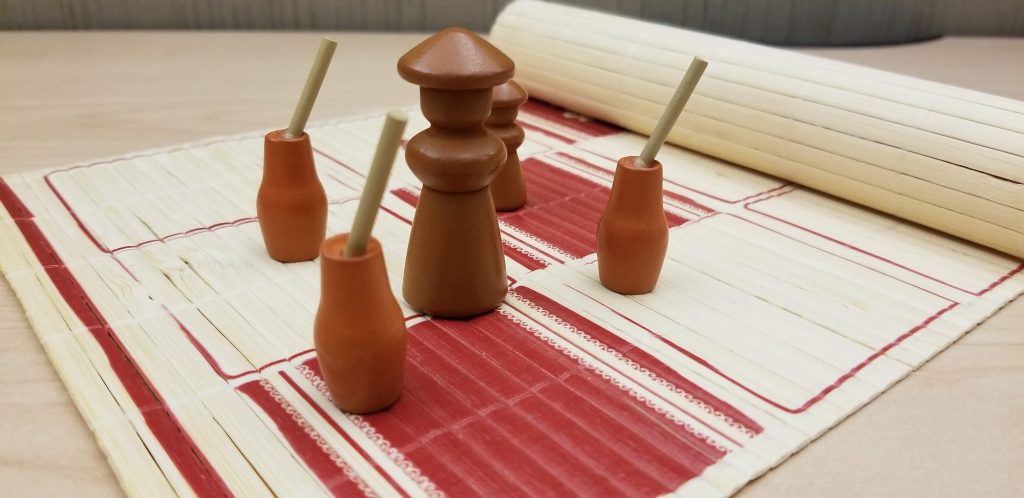
Just as a haiku conceals the depth of its meaning in the simplicity of its structure, Kanagawa conceals the true depths of its game play beneath its simplistic presentation. Many turns of the game will find you staring at a card that you really need and deliberating whether or not to hold out to see what comes up next. It’s a risky move because your opponent may wind up taking it on their turn leaving you with a lot of cards added to your studio and nothing added to your masterpiece.
Kanagawa is all about risk versus reward; even the face down cards leave you guessing. While each card has an icon printed on its reverse, that icon only illustrates what COULD be on the card, but not necessarily what IS on the card. The image of a tree, for example, just tells you that if any card is going to have a tree on it, it’ll be this one. But you might draft a column of cards in the hopes of snagging a tree, only to find yourself holding an essentially useless card in your hand, blank except for its season icon.
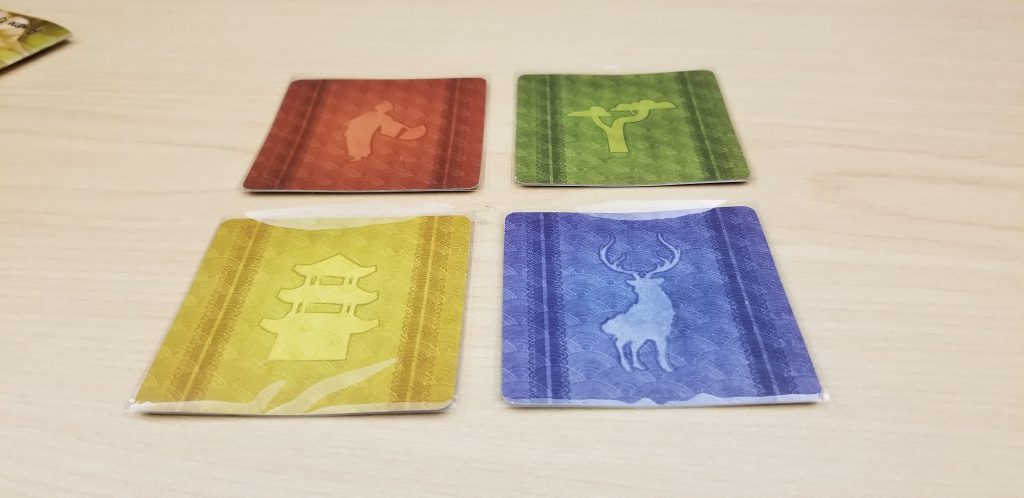
This press-your-luck aspect of Kanagawa extends to diplomas too. Once you’re eligible for a diploma, you have to decide right then and there whether or not to take it or to hold out for the next highest diploma in that category. Once you’ve passed on collecting a diploma, though, you’re never eligible to take it ever again. There’s always a chance that what you’re hoping for may not materialize and you will have lost your chance to cash in. Then again, you might find exactly what you’re looking for and you’ll be able to claim a higher scoring diploma as a result. The game presents these kinds of interesting decision making opportunities at every turn.
The only really negative aspect of Kanagawa comes from the “sliding cards beneath other cards” mechanic. This aspect of the game can be really frustrating since the most recently added cards are always lying flat on the table. This means that you’ve got to pry up a stack of cards each time that you want to add something to the display and it’s a real pain to do so. I’m not one to sleeve my games, but I made an exception for this one. While Kanagawa’s a delight to play mechanically, this physical aspect of it almost made me want to get rid of it. The unfortunate thing about sleeving the cards in this game is that the cards are all non-standard dimensions. I had to buy these Swan sleeves and cut them down to size using a pair of scissors. It was totally worth the effort, though. These card sleeves have vastly improved the experience and now Kanagawa’s always a welcome sight on my table.
Aside from that one complaint, I have nothing but praise for Kanagawa. When I originally purchased it, it was as a fake-out gift for my wife’s birthday as a way to distract her from her actual gift which came later. It’s the best fake-out gift purchase I have ever made. We both love Bruno Cathala’s more famous endeavor, Five Tribes. The same holds true for Kanagawa. She and I have thoroughly enjoyed our time spent playing this marvelous game and I don’t see that changing any time soon.


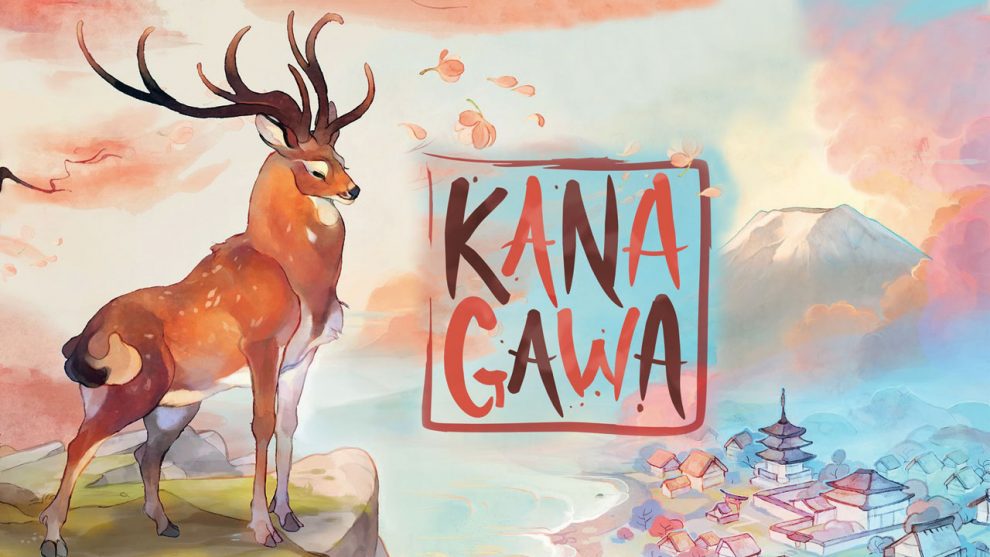

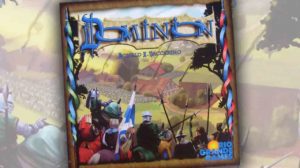
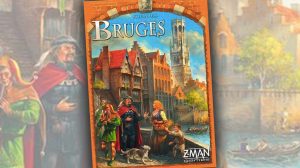

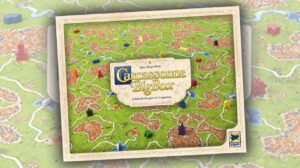




Add Comment